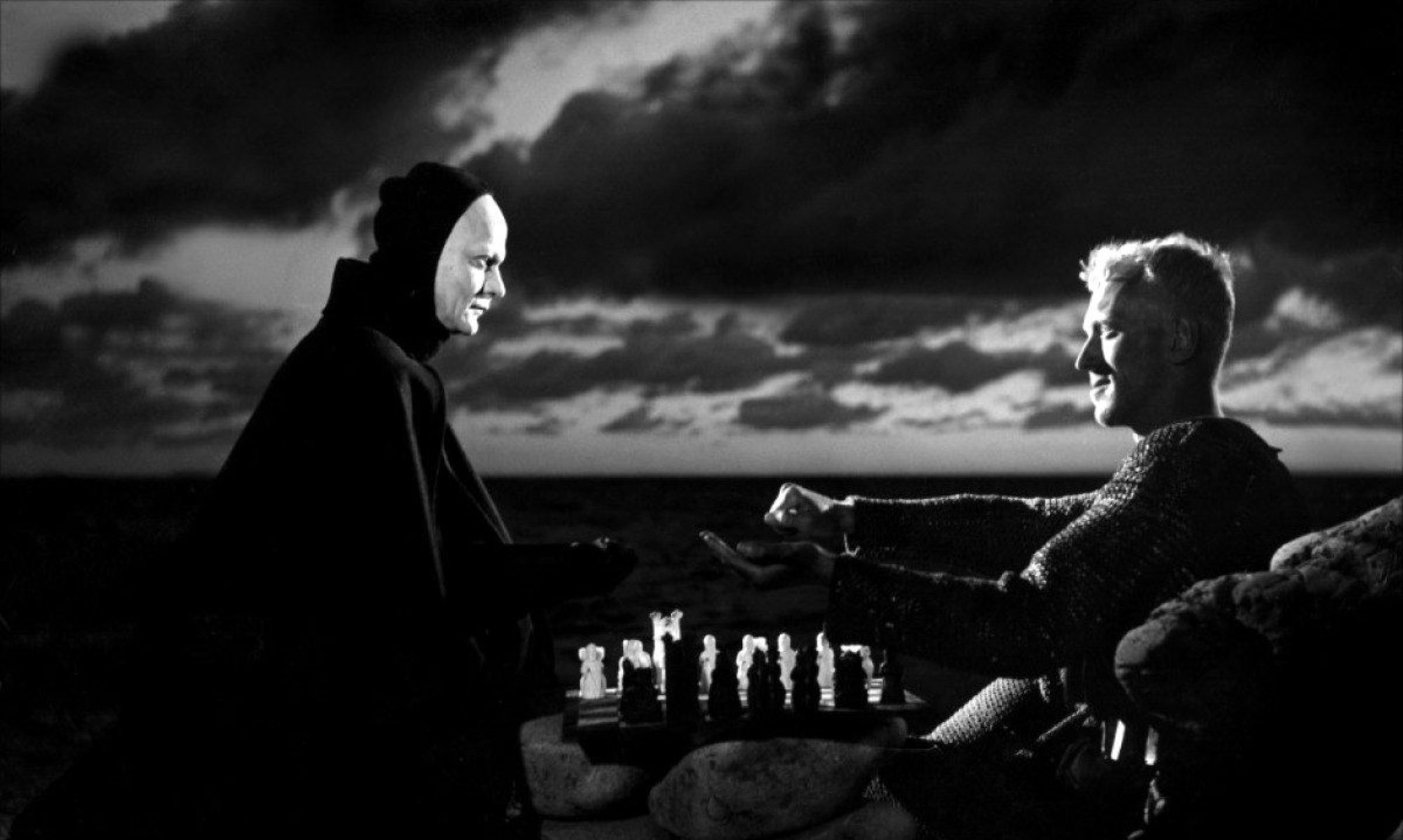I am currently the resident cartoonist on the Chess Cornwall website. The amalgamation of humour and chess seems sufficiently resonant with my novel Spurious Games for the cartoons to offer some access to the cast-of-mind behind the novel. I offer eight recent cartoons by way of example, although others are available in Dee Jay’s Chess Archive on the CCA website.
Cartoons belong to an unruly family, but some broad expectations have developed across time. They are typically non-realistic or even grotesque e.g. as in the work of artists like Martin Rowson, but the intent is always humorous or satirical. The political cartoon, in particular, plays an important social role in holding centres of power to account, often by deflating pomposity, as most famously achieved by James Gilray in his treatment of George 111 as a buffoon. Boris Johnson often gets the same treatment today from cartoonists like Steve Bell.
Editorial or ‘gag’ cartoons (with which my work identifies) all tend to have an underpinning semiotics comprised of visual metaphors or allegories, the purpose of which is to point out ambiguities or discrepancies by analogy. Such cartoons are also likely to have captions and speech bubbles. All depend crucially on the audience ‘getting’ the references.
In presenting my own cartoons I must acknowledge that they have been composed specifically for a niche audience of Cornish chess players, often depicting recognisable local characters with known personalities and quirks. There will probably be some slippage from the point of view of an outside audience, but I hope the seven will be sufficiently accessible to be of interest.
I offer a brief comment on each.
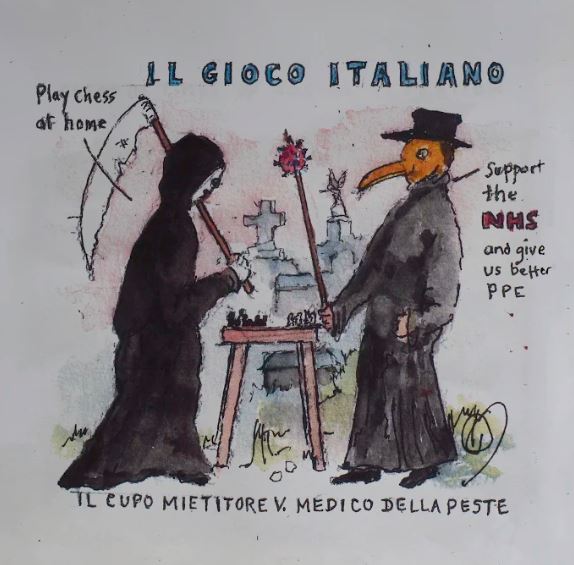
This image plays on a number of chess references. The Italian game is a chess opening and the ‘game’ context allows the ironic juxtaposition of two cultural reference points, il cupo mietitore and medico della peste. Chess becomes a metaphor for their conflict, but the ‘bite’ is in the contemporary reference to PPE with current UK provision at times little better than the mask of the plague doctor. Get the point, you cretins!

A conventional take on chess as a metaphor for warfare with a hopefully recognisable Donald Trump and Kim Jong Un doing battle with ICBMs. I was tempted to give both the black pieces! The starkness is lightened to some extent by the punning reference to the battle as between two ludicrous hair styles. And the can’t even set up the board the right way round!
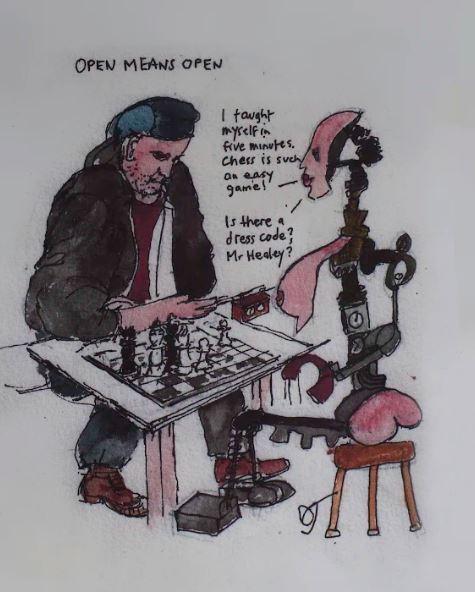
An echo can be discerned here of one of the themes of Spurious Games, the infiltration into chess of super-efficient computers. There is an oblique reference to the self-taught Alpha Zero, as Matthew Sadler and Nancy Regan’s Game Changer had recently entered the public domain. The feminisation of the robot takes us back to Bruce Lacey’s Rosa Bosom from the Cybernetic Serendipity Exhibition, itself a plot device in the novel. Finally, Grant Healey, the player depicted, is known for his eccentric dress sense, making the female robot’s enquiry ironic, the more so given her own nakedness with appended artificial bums and tits.
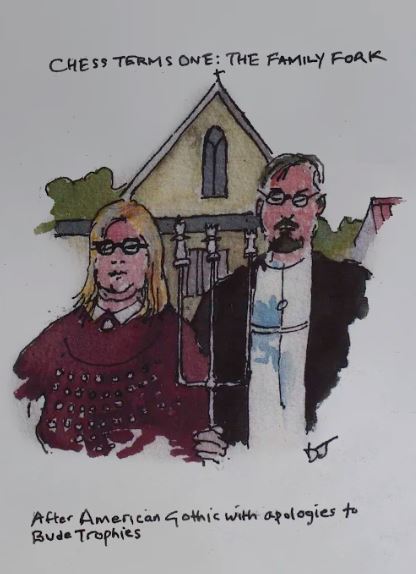
Nothing particularly satirical here, merely part of a series offering a gentle alternative take on the specialist language of chess. The ‘family fork’ in chess terms, of course, is when a knight simultaneously attacks king, queen and rook. The three-pronged fork of Grant Wood’s American Gothic both facilitates the image and allows me to depict, quite unfairly, two valued colleagues as the dour homesteaders.
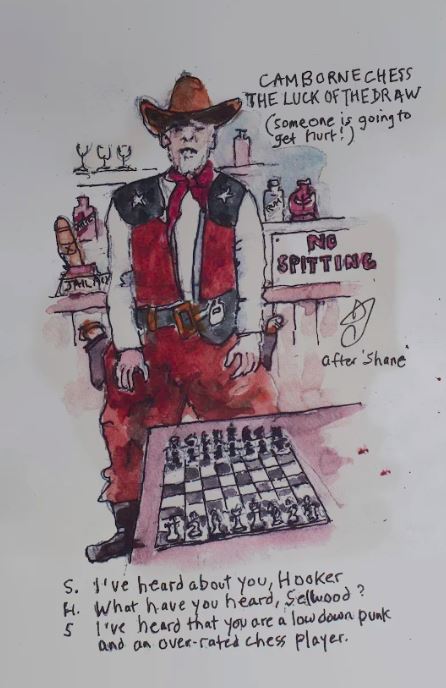
Another ‘take’ on the metaphorical language of violence and slaughter that has become strangely ubiquitous in the genteel contemplative world of the chess board, a theme strongly featured in Spurious Games. The metamorphosis to the literal extends to the setting, with Camborne’s alcohol-free club venue upgraded to a spit and sawdust bar in keeping with the spaghetti western imagery. The dialogue is amended from an iconic sequence in George Stevens’ Shane. In chess persona terms, Colin Sellwood is a strong aggressive player but would have his work cut out to beat James Hooker. His costume would be recognised locally as one he wore at a club social.
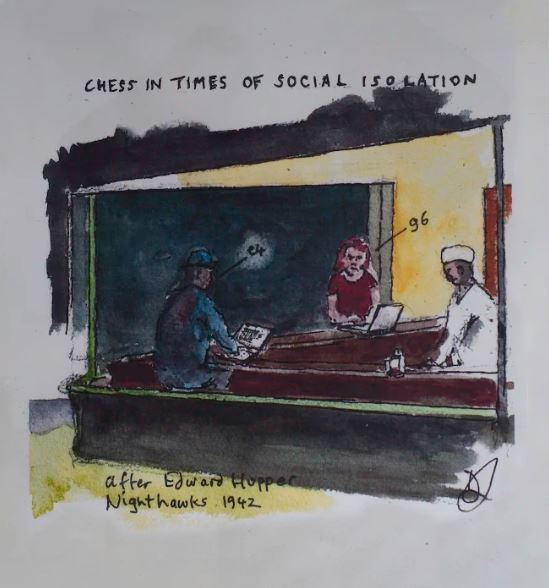
This is a mood piece. Most chess during the current lockdown is being conducted online and there is considerable debate as to whether it is quite ‘the same’. The cartoon fancifully imagines a compromise in which face-to-face chess is attempted under social isolation conditions. In doing so, it invokes and generalises the sadness and existential angst of Edward Hopper’s Nighthawks and contributes to a long tradition of seeing the image as a meme ripe for borrowing in other contexts.
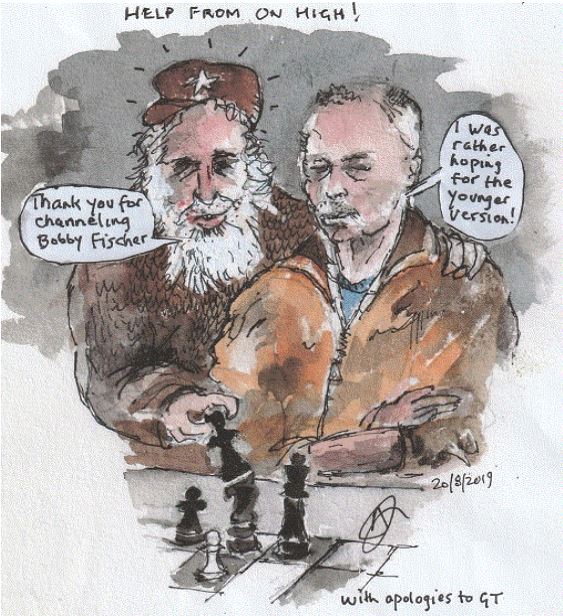
All serious chess players are influenced by great players of the past and might whimsically describe themselves as ‘channeling’ some dominant influence or other, say a Tal or a Fischer. But what if this were a literal possibility? Which Fischer might you get? The youthful chess genius or the mentally disintegrating elderly recluse?
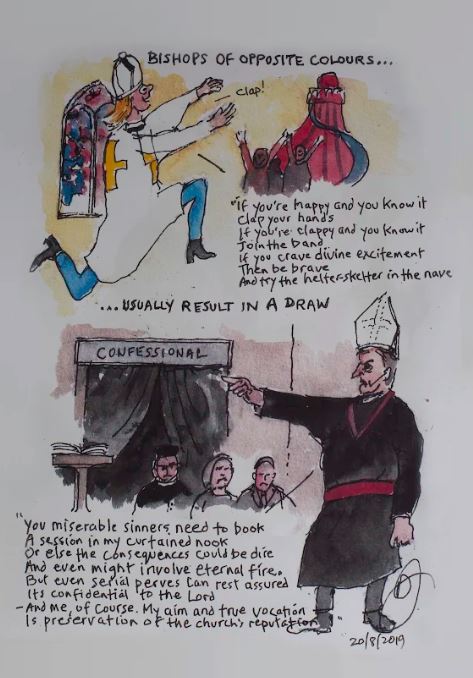
In general, as in Spurious Games, my use of irony is relatively gentle (except perhaps when confronting intellectual nonsense) and leans towards dry wit rather than seeking to deflate pomposity or display righteous anger. This last cartoon is my one exception of the chosen seven. Part of a series reinterpreting chess terms, it explores the term ‘bishops of opposite colours’ as a means of holding up to ridicule questionable aspects of organised religion. It appeared shortly after a helter-skelter was quite literally erected in a medieval nave and yet more revelations revealed the Catholic Church to look more and more like a paedophile ring.
